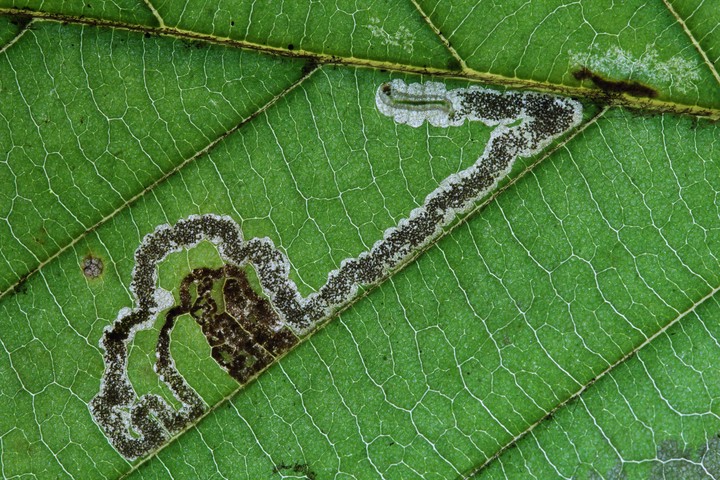Leafmining moths
 Photo by C Doorenweerd
Photo by C DoorenweerdLeafmining moths, particularly the family Nepticulidae and subfamily Lithocolletinae were the main focus groups of my research from 2008-2016.
Leaf-miners form a guild, an ecologically defined group of insects, which are characterized by having larvae that feed within plant tissue and create channels that are shut off from the outside by the epidermal layers of the plant. Leaf mining is not limited to Lepidoptera, but can be found in all holometabolous insect orders and leafminers have in many lineages diversified into a large number of species; there are for example over 7,500 species of sawflies (Hymenoptera: Tenthredinidae) (Davis et al., 2010) and over 2,500 species of leafminer flies (Diptera: Agromizidae) (Spencer, 2012). Although the name ‘leafminers’ suggests that they only feed in plant leaves, there are variations to the theme, as well as intermediate forms. Leaf-miners may for instance also use petioles, flowers or fruits. Feeding within plant tissue requires specific evolutionary adaptations. On the one hand the enclosed environment protects against desiccation and from certain predatory threats, on the other hand it imposes physical restrictions and individuals are fully exposed to the plant’s defence mechanisms. As a result of this close association, leaf-miners have a high degree of host specialization.
Typically, leafmining larvae cannot change their host, which makes the oviposition choice of their mother especially important. Most leafmining species are monophagous, they are restricted to host plants of a single genus, some are oligophagous, restricted to plants within a single family, and there are only exceptional cases of polyphaghy, where they can feed on plants from different families. Also, related leaf-miners tend to feed on related host plants. These patterns are found across all groups of leaf-miners. Within Lepidoptera, the degree of host specialization is generally higher in early diverging lineages, and always higher in leaf-mining groups. The pygmy leaf-mining moths, Nepticulidae, and the leaf blotch mining moths, Gracillariidae, are two families that are found among the earlier split-offs in the Lepidoptera tree of life, i.e. among the non-apodytrisian lineages. Both families are species rich, commonly found across all types of terrestrial ecosystems and almost all of the species are leaf miners. Within Gracillariidae, the subfamily Lithocolletinae in particular bears striking resemblance to Nepticulidae when it comes to host family preferences, suggesting that there have been common evolutionary drivers during their diversification.